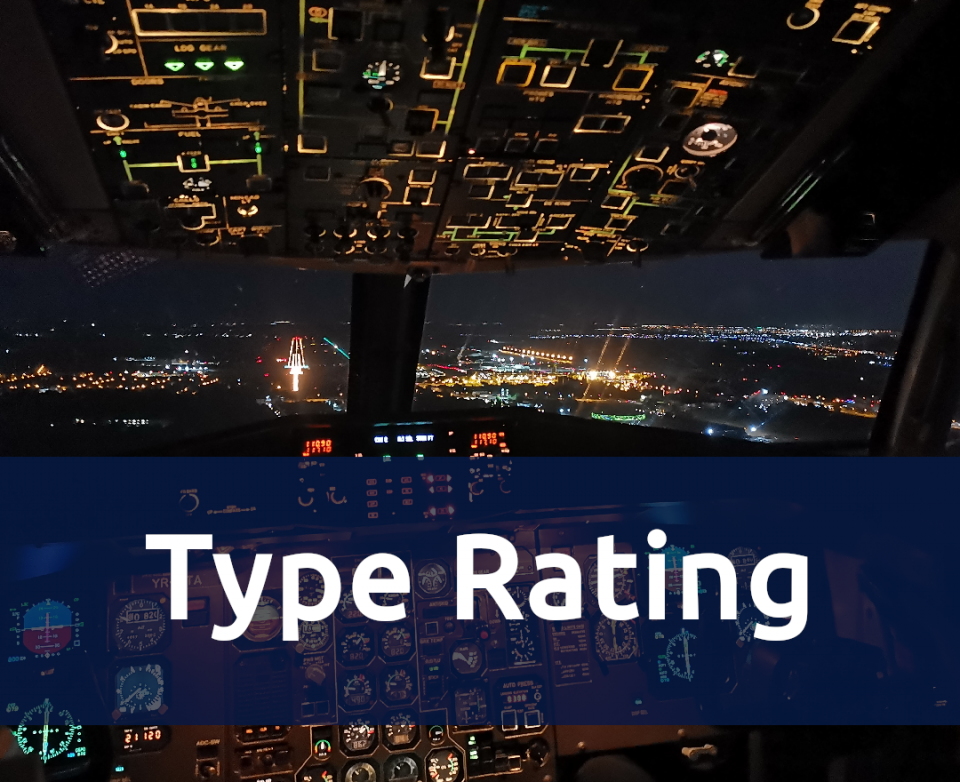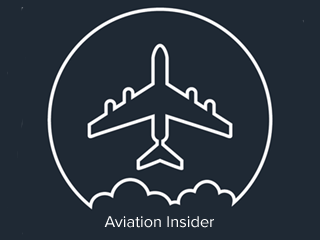About the course
A type rating is a certification, given by the national civil aviation authority, for a pilot to fly a certain aircraft type that requires additional training beyond the scope of the initial commercial license and aircraft class training rating. Initial training is done in Single Engine Piston (SEP) and Multi Engine Piston (MEP) aircraft, so in order to transition to flying conventional passenger airliners, a Type Rating would be required. Regulations from ICAO, state that:
- Type Ratings should be established for aircraft with minimum crew of at least two pilots or when considered necessary by the national civil aviation authority
- The applicant must demonstrate the level of skill and competency required, including all normal and abnormal flight procedures, instrument procedures (where applicable) as well as upset prevention and recovery training.
Course Requirements
In order to apply for a Type Rating, the applicant must have completed an approved MPL course or meet the following criteria:
- 70 hours Pilot In Command (PIC) on aeroplanes.
- Multi Engine Instrument Rating (ME-IR).
- Have successfully completed the ATPL Theoretical Knowledge course and examinations.
- Have undertaken and successfully completed an approved Multi Crew Cooperation course (MCC) on aeroplanes, achieving the required training hours.
- Have completed the training course stated FCL.745.A. (Also known as A-UPRT)
Course structure and completion
Theory Section
- Pass a theoretical knowledge exam organised by the ATO in order to demonstrate the level of technical and procedural knowledge required for the safe operation of the respective aircraft type being trained for.
- Multi-pilot aeroplanes - the theory exam shall be written and contain at least 100 multiple-choice questions that are divided and allocated appropriately across the main subjects of the training syllabus. I.e. Certain percentages towards Flight Controls, Hydraulics, Electrics etc.
- Type rating will most probably also include a short PBN (Performance Based Navigation) section, possibly as an extra couple of days in order to add the PBN rating to your licence.
Flying Section
- The practical training must be undertaken residentially at an approved training organisation.
- An applicant for a class or type rating shall pass a skill test in accordance with Appendix 9 - Part-FCL to demonstrate the skill required for the safe operation of the respective type of aircraft.
- The training is to be undertaken in approved flight simulators: Fixed Training Devices (FTD) and Full Flight Simulators (FFS). It is allowed for there to be a mixture between the two types, but a certain portion of the training must be done in a FFS.
- The skills test which is undertaken at the end of the required simulator training must be completed within a period of 6 months after commencement of the type rating training course and within a period of 6 months prior to the application for the type rating issue on the licence.
- To complete the type rating and have it endorsed on the licence, the applicant must complete base training. This involves completing 6 visual circuits, take-offs and landings in the actual aircraft. There will be pre-base training done prior to this which involves practicing visual circuits and touch & gos in an approved simulator.
Equipment
If doing a type rating as part of an airline employment, there is not much required in terms of equipment that you need to bring yourself as it should all be provided to you, either prior to our at the start of the course. This includes all study material and the EFB (Electronic Flight Bag), which is an e-tablet for all of your checklists, charts and manuals etc. However, you may wish to have a laptop/computer or your own ipad to study from as well.
Tips and Advice
Theory Section
- As well as the study material, read your aircraft FCOM (Flight Crew Operations Manual) and FCTM (Flight Crew Techniques Manual) as the study material is derived from this and usually goes into more depth. This can greatly help aid your understanding if you require more in depth information.on topics you are studying.
- Ask your instructor questions and get into discussions with them and your classmates, as this will help boost understanding. It's very likely that your theory instructor will be rated on that aircraft type too.
- Utilise online question banks to assist your learning and test your knowledge to identify any gaps that may be present.
- Learn the aircraft limitations, speeds and general figures as these will be tested in your final exam.
- Use a cockpit diagram to help familiarise yourself with the layout of instruments, switches, buttons and dials etc.
- If you can, do some light reading before you start your type rating just so you can familiarise yourself with the basics of systems etc and lead nicely into the course.
- Don't ‘over study’. It's easy to neglect rest, breaks and good nutrition but these are very important to your well-being and overall performance.
Simulator Sessions
- Type rating simulator sessions share the same disciplinary basics and good habits as you will have seen in your MCC/APS course. Strict discipline from the start will put you in good stead for the rest of the course.
- Adopt and practice the Core Competencies.
- “Mouth Music” - Practice and recite checklists and responses. Knowing this in and out will help you enormously.
- Practice procedures and profiles with your sim partner during free time in a model cockpit mock-up, or even in a coffee shop. This will also build rapport between you which will help you during sim sessions.
- Know your cockpit diagram like the back of your hand. Know where everything is as this will help preserve time, as you won't be searching for where things are during a session when doing procedures. Practice your ‘scan flows’ so it will be ingrained in your memory for flying.
- Practice a structured departure, approach and emergency briefings. Try to avoid ‘waffling’ on for too long. Brief the main points and keep it “short and sweet”. Also know your decision making models (airline dependant on which one is used).
- Never be afraid to correct your sim partner if you believe they’re deviating from procedure or doing something incorrectly, as this is a big part of CRM (Crew Resource Management) and multi-crew operations. Also, be assertive when needed and show conviction in your requests as Pilot Flying or Pilot Monitoring.
- Memorise your aircraft’s normal operating and limitation speeds - Correct application during procedures and preventing exceedance.
- Be aware of secondary failures/implications during emergencies. A primary failure that flags as an alert may have affected other systems that you’re not aware of.
- Pitch, Power, Set and Trim!
- Seat position and height is crucial to ergonomics and optimal control, especially if flying an Airbus.
- Get adequate rest before simulator sessions and make sure you are well fed and hydrated, because the last thing you want during an intense session doing engine-failure procedures, is to feel low on energy and be hungry! Exercise is important to maintain good mental and physical health, even if it means just going for a walk.
- Ask for feedback from your instructor on the sim sessions so you can enhance your strengths and also fix anything that could have been done better. You will have a debrief after each session. Make a list of these points and use it as a crib sheet for future lessons and for your final check flight.
- Watch online instructional and cockpit videos about your aircraft as this will provide different perspectives and also some very useful motivation!
- Remember that your instructors WANT YOU TO PASS and see you succeed in gaining the necessary skills and knowledge to go out and fly.
Base Training
- Familiarise yourself with the Visual Circuit pattern profile as this is what you will be doing during base training - Pattern, Heights, Speeds, Attitudes, Callouts, Visual Perspectives and Touch&Go Procedures.
- Just like you were taught to do during your initial flight training, take a mental “snapshot” of the runway visual perspective when lined up for take-off, so you can judge the flare better on landing.
- Set the aircraft attitude and power on profile in good time so that you are stabilised as early as possible on the approach and not playing catchup.
- ENJOY! Base training is described as one of the most memorable and exciting moments of a pilot's career.
Common Mistakes
- Over reliance on question banks.
- Not knowing aircraft limitations well enough.
- Lacking knowledge and discipline in checklists, responses and procedures.
- Not being assertive enough or showing indecision.
- Not knowing the ‘scan flows’ off by heart.
- Over controlling and not anticipating manoeuvres i.e, level offs and turns.
- On a jet, keep in mind the pitch & power couple, especially during stall recovery practice.
- Not knowing the Flight Mode Annunciations or control/auto-pilot modes.
- Not stabilising the aircraft early enough, thus playing catchup, especially along the final approach segment.
Next Steps
- Line Training (as part of your airline employment)



